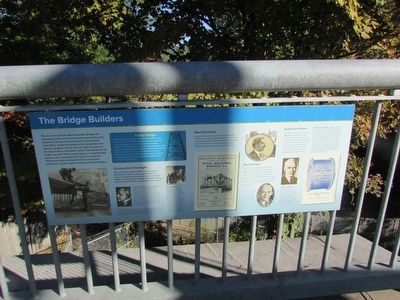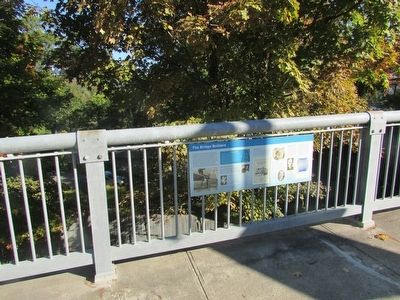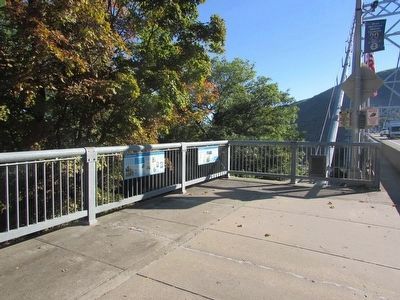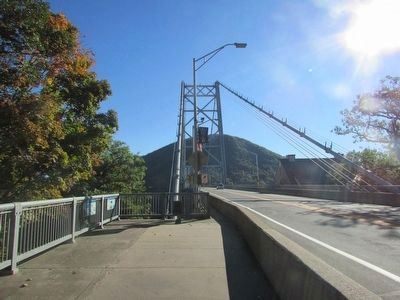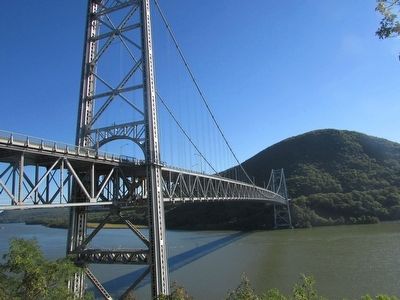Fort Montgomery in Orange County, New York — The American Northeast (Mid-Atlantic)
The Bridge Builders
The men who built the Bear Mountain Bridge had completed some of the most challenging construction projects of the period. Connected by educational institutions, bridge and engineering companies, and previous projects, all had risen through the ranks to the tops of their professions. Under their guidance, the bridge was built with unusual speed, at comparatively minimal cost, and without the loss of a single life. Techniques they developed during construction ushered in a golden age of suspension bridge design.
Bridge Design
Howard Baird designed the Bear Mountain Bridge at the request of Frederick Tench, with whom he had worked on previous projects. Baird’s design documents allowed Terry & Tench Construction Co. to estimate costs, present the project to the Harrimans, and secure a construction contract. Baird had worked his way up from draftsman to chief engineer at the Phoenix Bridge Company, Brooklyn Rapid Transit Company, and the highly-regarded engineering firm Boller, Hodge & Baird.
Construction Oversight
Baird worked alongside the Bear Mountain Hudson River Bridge Company’s chief engineer, Wilson F. Smith, consulting engineer William H. Burr, and Major William A. Welch, general manager and chief landscape engineer of the Palisades Interstate Park Commission.
W. H. Burr was considered one of the greatest engineers of the post-Civil War era. He was a professor of engineering at Rensselaer Polytechnic Institute, Harvard, and Columbia University. He was also an internationally known consulting engineer, associated with such projects as the Holland Tunnel, the old Croton Aqueduct, the Panama Canal, and numerous other bridge projects, including the George Washington Bridge. Burr knew Howard Baird from the Phoenix Bridge Company and had consulted on bridge projects for Bolier and Hodge.
Wilson Smith, a student of W. H. Burr, was a graduate of the Columbia University’s School of Mines. He had worked on numerous projects for the New York City & Hudson River Rail Company and the New York Rapid Transit Commission. He also supervised construction of the Kensico Dam and related structures.
William A. Welch was the general manager and chief landscape engineer of the Palisades Interstate Park Commission (PIPC). Responsible for unprecedented beautification and development at Bear Mountain and Harriman State Parks, Welch also designed the scenic Storm King Mountain Highway. He began the New York-New Jersey Trail Conference, chaired the fledgling Appalachian Trail Conference, and was a founder and first president of the National Council of State Parks.
Steel Fabricators
Howard H. McClintic began the McClintic-Marshall Construction Company (M-M) in 1900 with his Lehigh University engineering classmate Charles D. Marshall. Over the next 30 years, M-M became the largest independent steel manufacturing firm in the country.
Steel Erectors
Frederick Tench was an early sponsor of the bridge plan and helped secure financing for the project. He and Edward F. Terry became close friends while building bridges for the Union Bridge Company and Union Pacific Railroad. Attracted to large projects in New York City, they formed the Terry & Tench Construction Company in 1895. Five years later, it was the most successful steel construction firm in the country.
Suspension Cables
The construction of cables for the Bear Mountain Bridge marked a turning point in the history of parallel wire cable fabrication. New theories, rigidly field-tested during construction, proved extremely successful and made it possible to develop cables of almost any diameter and number of wires.
Holton D. Robinson was an authority on bridge-cable construction and held many patents for cable improvements. He built the first huge cables that made long suspension bridges possible. At Bear Mountain Bridge, he perfected a wrapping for cable strands and machinery for binding the cables with wire, enabling the bridge to be constructed at unusual speed.
Washington A. Roebling, the 87-year-old president
of the famous cable construction firm John A. Roebling’s Sons, directed the production of Bear Mountain Bridge’s 18-inch cables. Educated at Rensselaer Polytechnic Institute, he built bridges for the Union Army during the Civil War and had assisted his father on the construction of several early railroad suspension bridges. After his father’s death, he became chief engineer of the Brooklyn Bridge. Incapacitated while working on that bridge, he was an invalid for ten years, but remained actively engaged in cable construction with assistance from his wife, Emily. Roebling, Charles Sunderland (the company’s chief engineer), and Holton D. Robinson developed and tested new cable spinning theories and methods in erecting Bear Mountain Bridge.
Topics. This historical marker is listed in this topic list: Bridges & Viaducts.
Location. 41° 19.207′ N, 73° 59.282′ W. Marker is in Fort Montgomery, New York, in Orange County. Marker is on U.S. 202, on the left when traveling east. Marker is on the west side of the Bear Mountain Bridge, on the north side of the street. Touch for map. Marker is in this post office area: Fort Montgomery NY 10922, United States of America. Touch for directions.
Other nearby markers. At least 8 other markers are within walking distance of this marker. A Strategic Location (here, next to this marker); Bear Mountain Bridge (a few steps from this marker); Popolopen Creek Trail to Fort Montgomery
(about 300 feet away, measured in a direct line); Fort Clinton (about 300 feet away); Appalachian Trail (about 400 feet away); Fort Clinton’s Outer Redoubt (about 500 feet away); a different marker also named Appalachian Trail (about 500 feet away); The British Attempt to Divide the Colonies during the War of Independence (about 500 feet away).
More about this marker. Portraits of W.H. Burr, William A. Welch, Frederick Tench, Edward F. Terry, and Holton D. Robinson, and ads for McClintoc-Marshall Construction Company and John A. Roebling’s Sons Company appear on the marker. Also on the marker is a photograph of men constructing the Bear Mountain Bridge.
Credits. This page was last revised on June 16, 2016. It was originally submitted on October 10, 2015, by Bill Coughlin of Woodland Park, New Jersey. This page has been viewed 545 times since then and 63 times this year. Photos: 1, 2, 3, 4, 5. submitted on October 10, 2015, by Bill Coughlin of Woodland Park, New Jersey.
